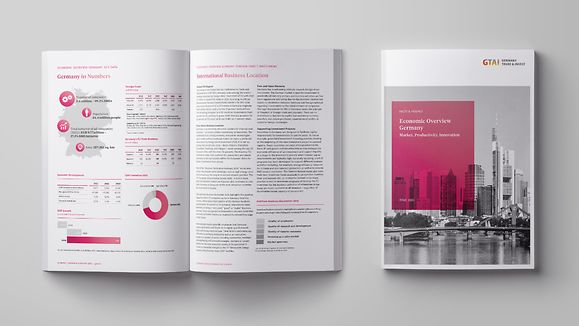Germany is an attractive production location thanks to high productivity, stable labor costs and advanced manufacturing processes.
High Productivity
In terms of nominal unit labor costs, Germany has made serious productivity gains since 2020. While some European countries, especially in Eastern Europe, are showing a substantial increase in nominal unit labor costs of more than five, sometimes more than seven percent, Germany has registered a moderate growth of 3.7 percent. As a result, Germany has become more competitive – particularly in manufacturing.
Stable Labor Costs
The labor cost difference between Germany and its neighbors in Eastern Europe has been reduced significantly. Since 2020, labor costs in manufacturing have been rising in the EU-27 member states at an annual rate of 3.4 percent. While labor costs in some EU countries – and particularly those in Eastern Europe – have been growing at an annual rate of more than seven percent, labor costs in Germany have been increasing at a rate of just 2.7 percent.
Growth* of Labor Costs in Manufacturing 2000-2023
There are currently around 325 occupations recognized by the system. The German government, in close cooperation with the German Chambers of Industry and Commerce (IHKs) and the German Confederation of Skilled Crafts (ZDH), ensures that standards are adhered to rigidly, guaranteeing the quality of training provided in Germany.
The higher education system also applies the dual system of vocational training. There are currently more than 120,000 students taking part in a dual study program. These are usually offered by universities of applied sciences. Most of the almost 1,750 dual study programs are in engineering or in business. Today, more than 56,000 companies are participating.
Highly Automated Manufacturing
Production in German manufacturing is highly automated. According to the International Federation of Robotics, 429 industrial robots per 10,000 employees were in operation in 2023. In absolute terms, 28,400 industrial robots were deployed in that year alone. Today, Germany is the European leader in industrial automation. Clients in the automotive and electronics industries are the primary beneficiaries of industrial robot installation.
Robot Density* in the Manufacturing Industry 2023
![Mid adult male technician maintaining cables in engineering plant | © GettyImages/Sigrid Gombert RF_Getty_492693613_RZ[1]](/resource/image/780672/16x9/1024/576/e8d6194b7f74ed603948023289bacd17/02F99389308C84F79027B824A6CB3959/rf-getty-492693613-rz-1-.jpg)
